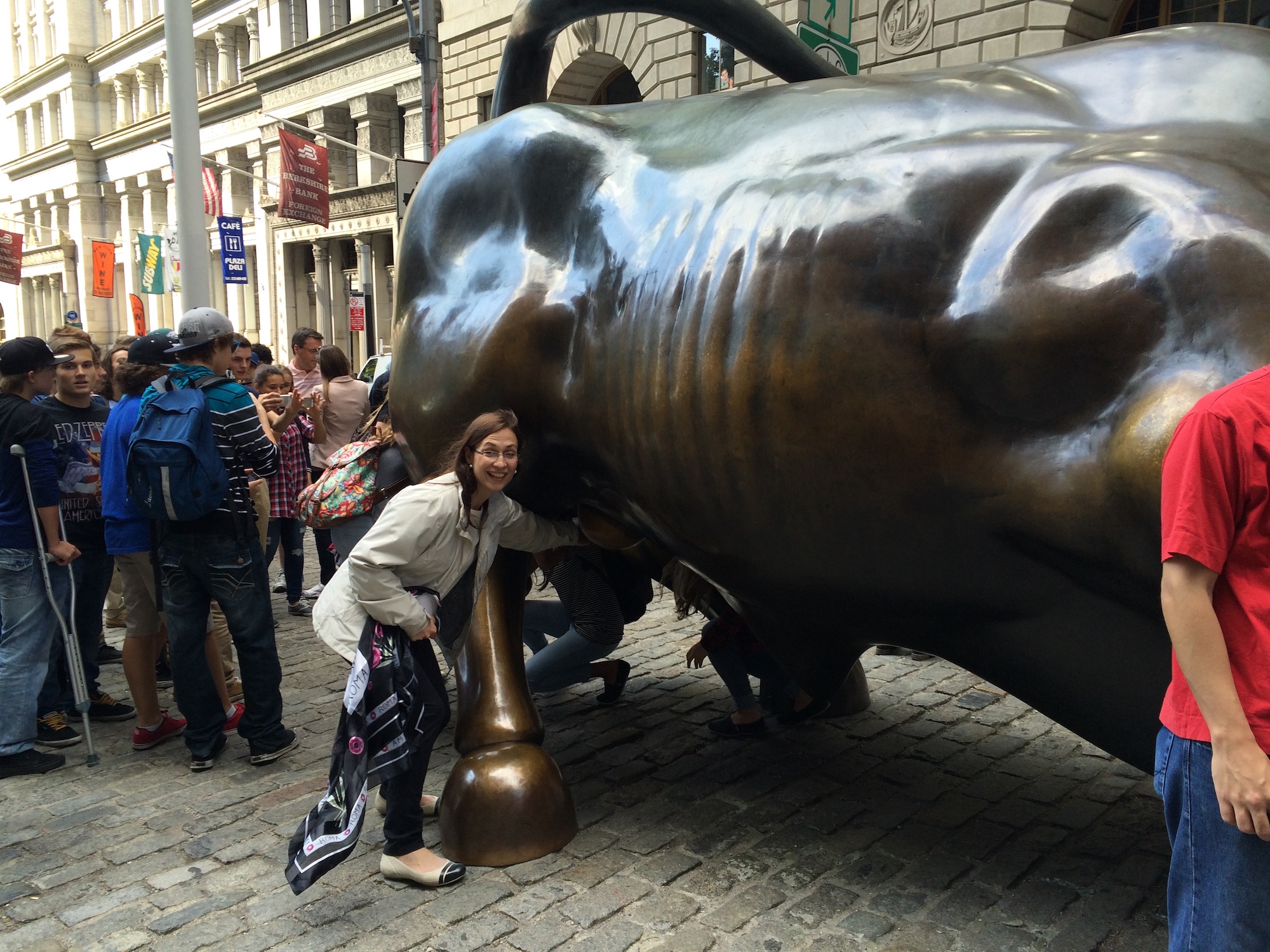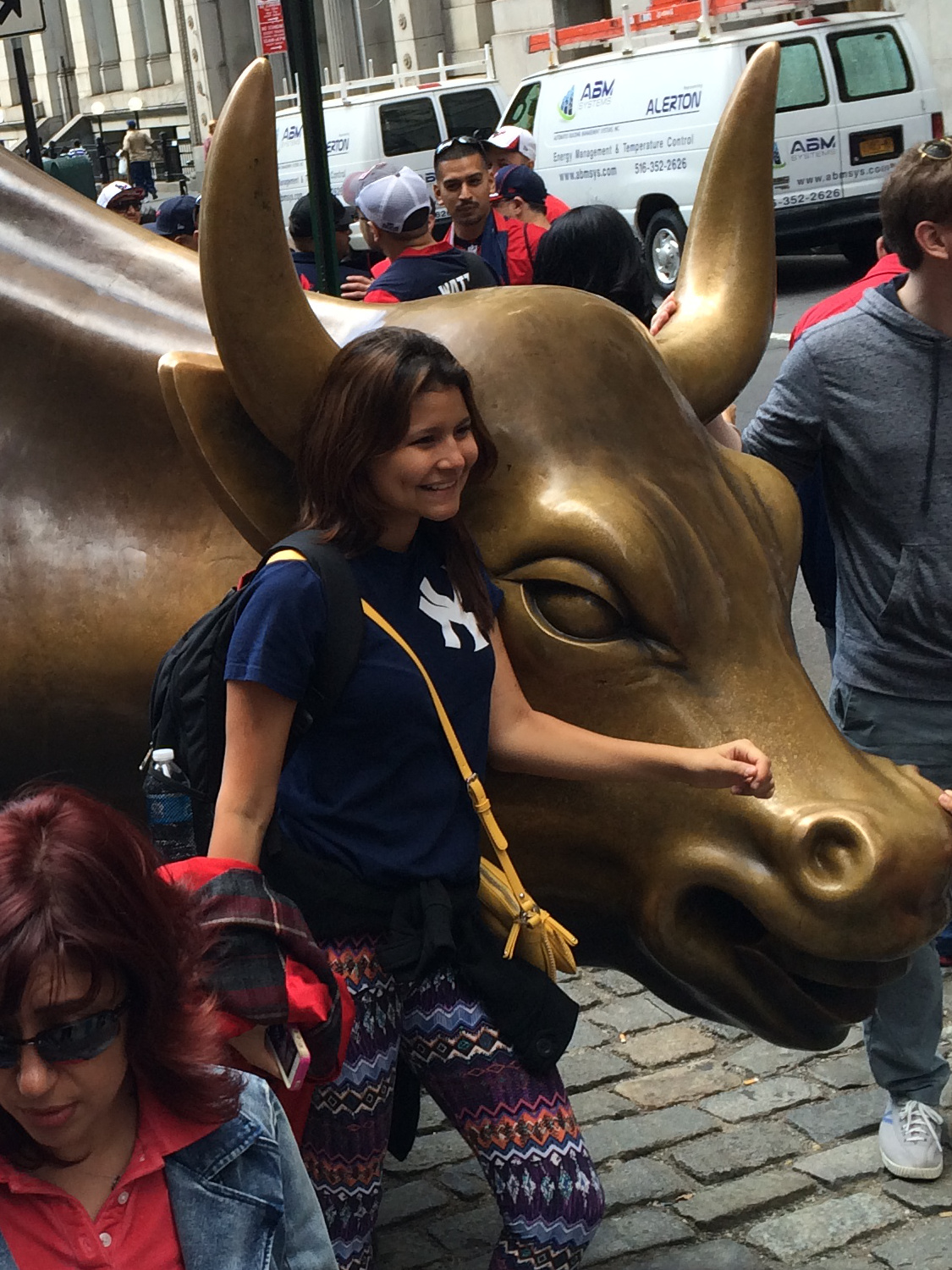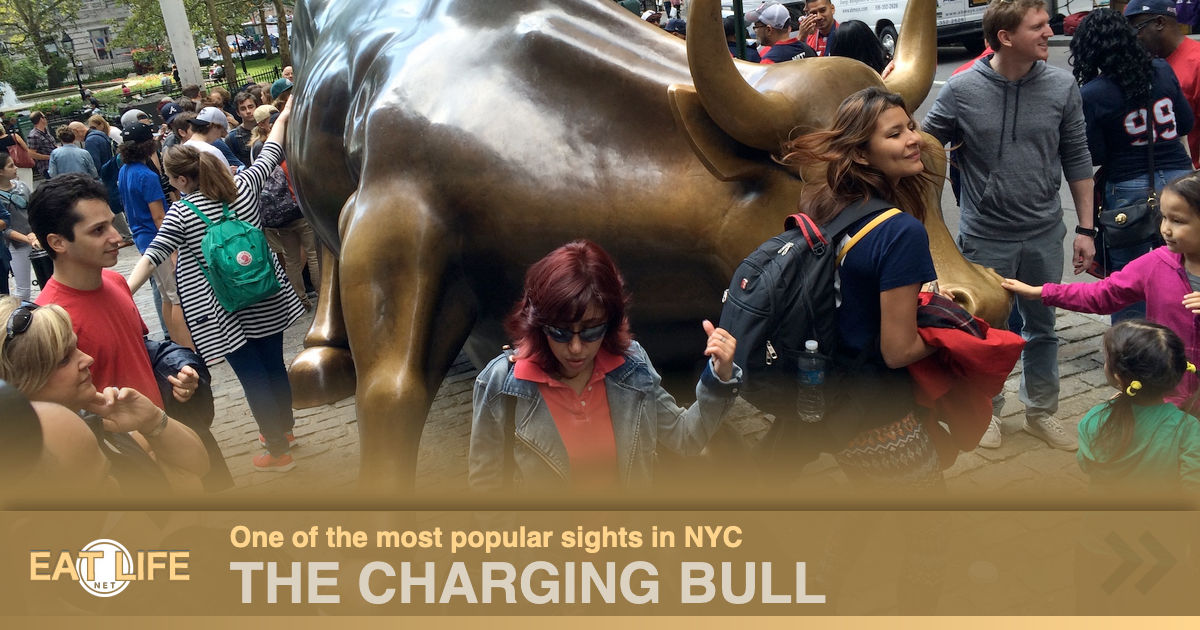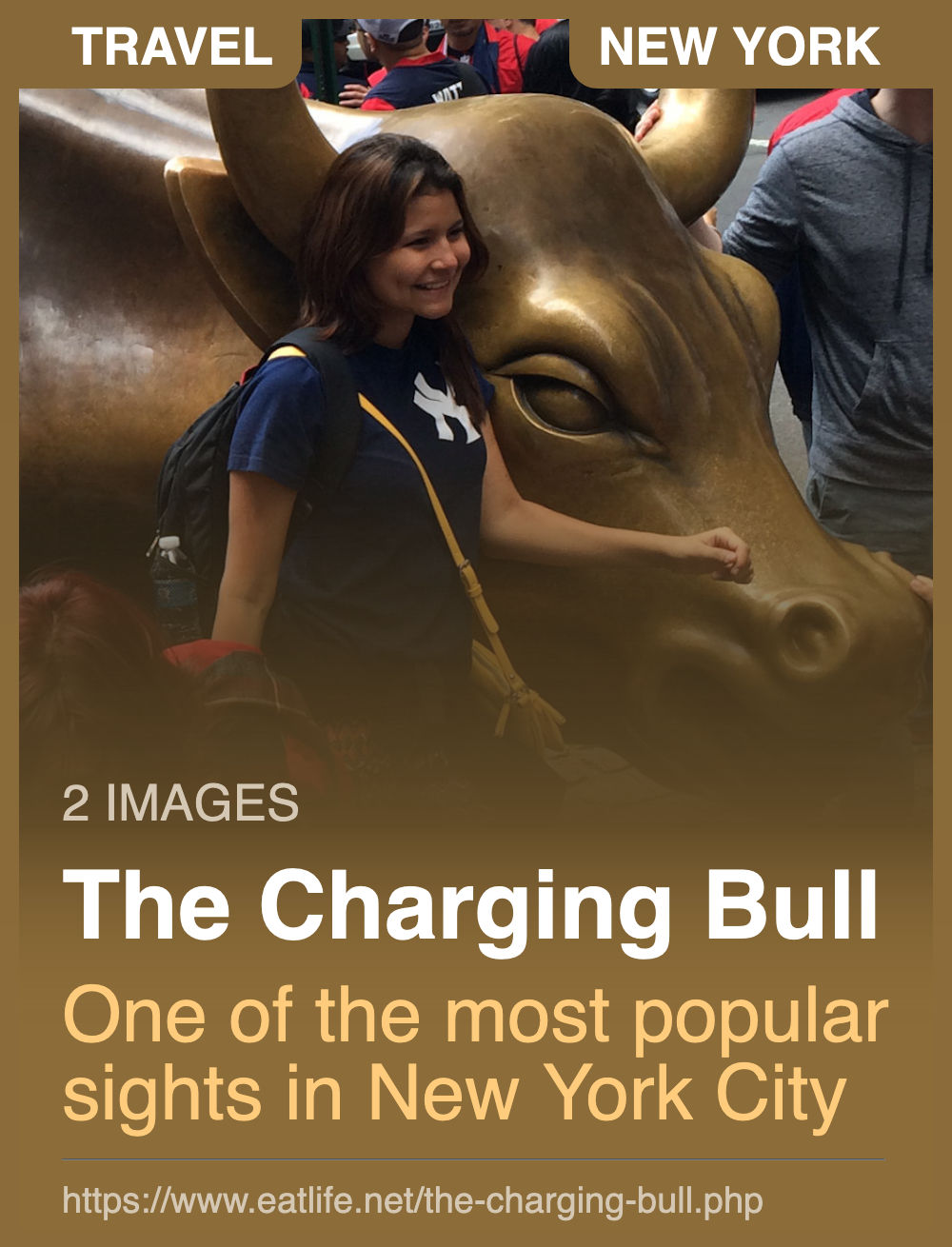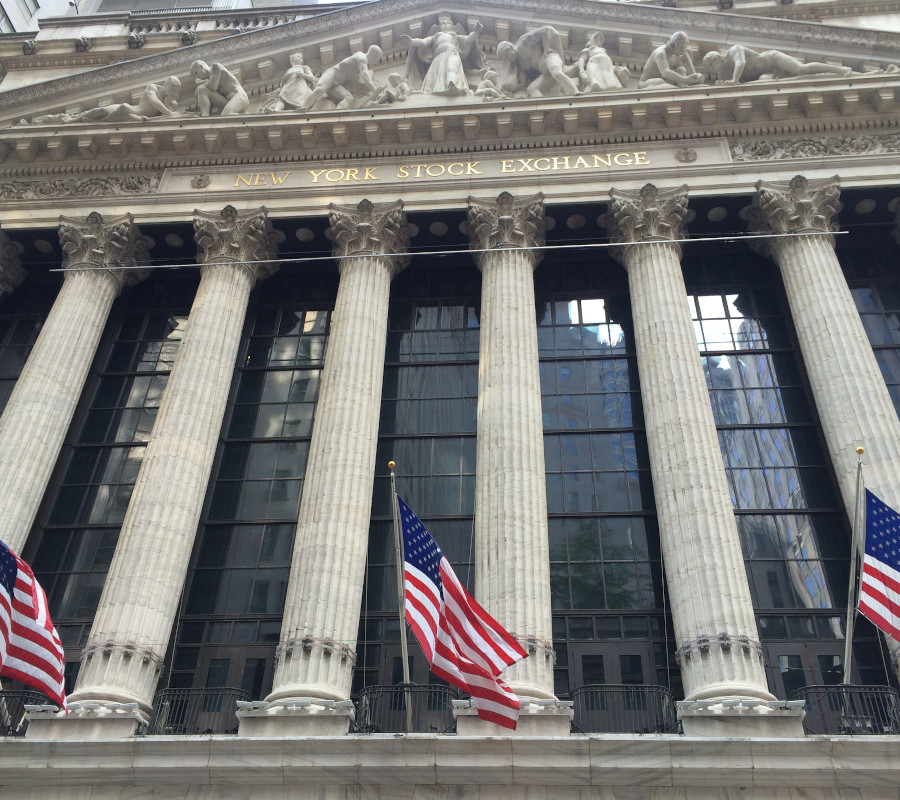Arturo Di Modica:
First conceived of the Charging Bull as the perfect antidote to the Wall Street crash of 1987.He worked on the now world-famous Charging Bull for over two years at his studio on Crosby Street in the Soho district of Manhattan.
It was his most ambitious and massive work of sculpture to date, so large that the Bull had to be cast in separate bronze pieces and then laboriously welded together and hand finished. Once completed at the end of 1989, it weighed over three and a half tons and measured 18 feet long.
In the early morning hours of Friday, December 15, 1989, Arturo with a few friends dropped the Charging Bull on Broad Street right in front of the New York Stock Exchange.
The previous night he'd gone to the location with a chronometer to check – noting that every 5 – 6 minutes the police patrol would come by, so he saw he'd have to drop the bull and get away within 4 1/2 minutes. But on the actual morning of the operation, Arturo and his crew discovered that during the day the NYSE had installed a large Christmas tree, blocking the way. Arturo couldn't even turn the truck around. So on the spot Arturo decided to place the Charging Bull right under the tree, as a gigantic Christmas present for the City and the World. The next day the Charging Bull was news all around the world, and enormous crowds of excited onlookers and media surrounded the mysterious sculpture that had come from no one knew where.The sculpture was removed at the end of the day by the NYSE, but a permanent home was found for the Charging Bull close by at Bowling Green. Today Arturo's Charging Bull is a world known tourist attraction. It stands there to this day, visited by millions of tourists, a talisman for Wall Street traders, and a source of pride for all New York City residents.
http://www.chargingbull.com/history
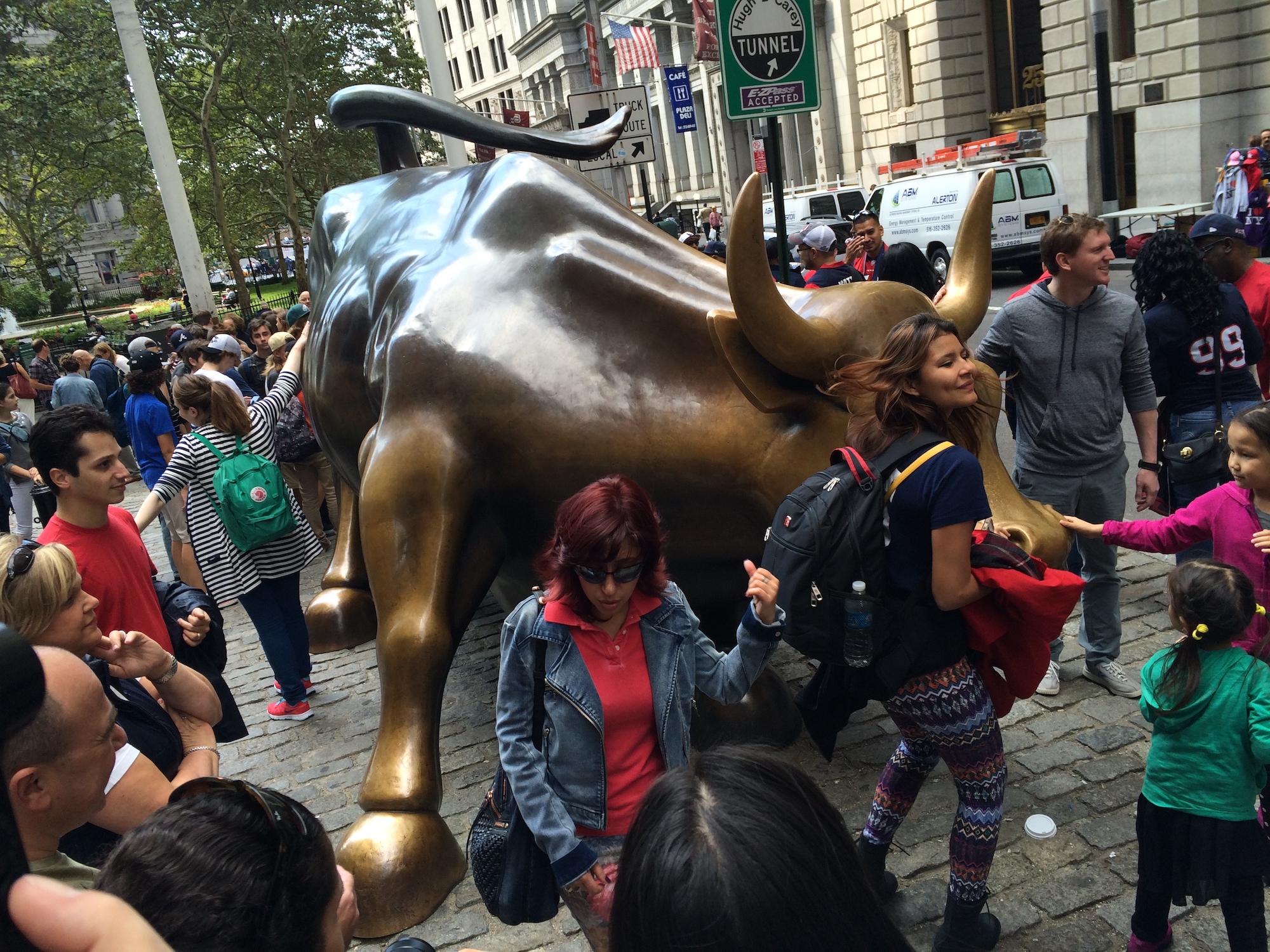
The Charging Bull has become a universal symbol of the American stock market and big business. It's also one of the most popular sights in New York City. Tourists travel from around the world to see the bronze beast, striking poses and snapping pictures in front of it.
It makes you wonder, how did it become so famous? Most people visiting don't even know the story.
The Creator:
- Arturo Di Modica is an Italian-American artist born in Sicily in 1941.
- He started sculpting as a teen and eventually moved to Florence, where he became well-known throughout Italy for his work.
- In the 70s, like many artists before him, he came to New York.
- Drawn to the city's energy, Di Modica opened up a studio on Grand Street in modern day SoHo.
- His work on the bull started after the stock market crash in 1987.
- Di Modica paid $360,000 of his own money in order to build Charging Bull.
- His goal was to inspire people to carry on through hard times and celebrate the perseverance of the American business professional.
- The bull was chosen to represent the "bull" (or rising) market and thriving economy — something everybody was fighting for after the crash.
The sculpture weighs over 7,000 pounds and stands 11 feet tall.
When the time came to display his grand artwork, Di Modica drove the bull into Manhattan on the back of a flatbed truck and illegally (guerilla-art style) placed the sculpture outside the New York Stock Exchange.
While it was meant to be a symbol of prosperity, members of the New York Stock Exchange did not take kindly to the free gift. The police department was called and, later that same day, the Charging Bull was taken away to an impound lot.
Even though it only lived a short life in front of the stock exchange, locals fell in love with the bull and demanded he be returned to the city. 6 Days later the New York Department of Parks and Recreation complied, placing the statue at its new location, two blocks from the New York Stock Exchange, and rededicated the Charging Bull on Dec. 21, 1989.
https://www.thewallstreetexperience.com/blog/story-behind-legendary-charging-bull
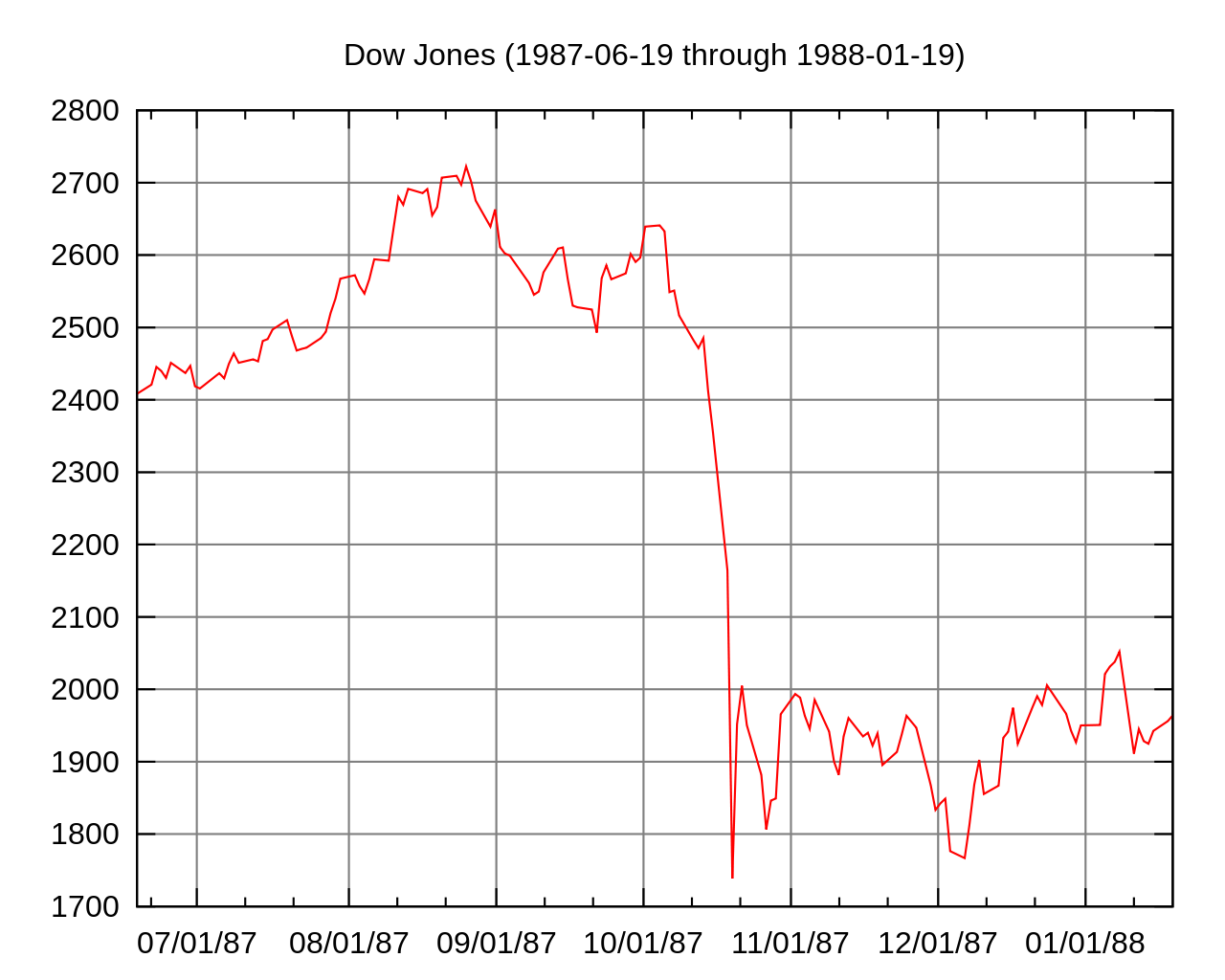
On Oct. 19, 1987, world markets went tumbling down, due to a combination of programming errors and international factors. While the real catalyst for the crash continues to elude analysts, complex interactions between international currencies and markets contributed. Overall, program traders shouldered the majority of the blame; following the brief meltdown several exchanges implemented circuit breaker rules, among other precautions, to slow the impact of such irregularities in the future.
As with other financial crisis scenarios, some warning signs of excesses preceded the inflection point in 1987. Economic growth had begun to slow and inflation was rearing its head. A strong U.S. dollar was pressuring exports, and valuations were climbing to very high levels. While market participants were aware of these issues, many shrugged off the warning signs and continued to take aggressive risks.
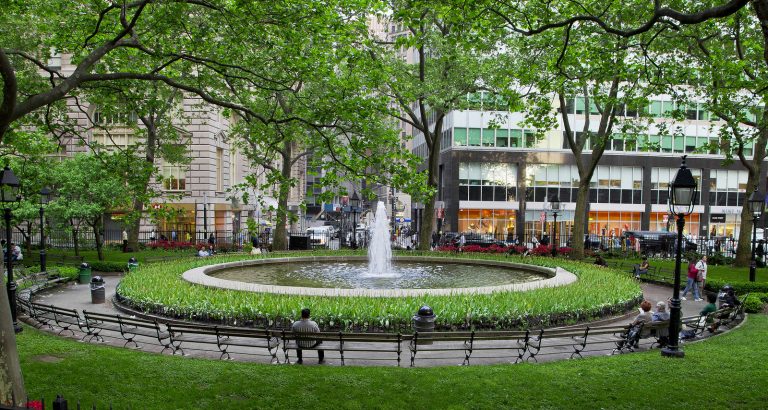
The oldest park in New York.
Although it is also possibly one of the smallest parks in the city, it has a fascinating history which can still be seen to this day. Originally a stockyard for the earliest pilgrims, this area has seen trades, battles, protests, and has watched as New York City evolved into the mecca that it is today. Bowling Green is a living piece of history. The park has always been a center of activity since its initial founding.
- Bowling Green was the site that Peter Minuit paid a supposed $24 for Manhattan in 1624.
- Later in 1675, it was decided that this area would play host to an annual market for "grain, cattle and other produce of the country." These settlers were perhaps the first farmers market in the New World.
- A couple years after this decision in 1677 the first well in the city was dug at this location. Although New York City is a peninsula, there has been a long-standing problem of getting water to the center.
- It was not until 1733 that the green space started to become the park that it is today. It that year the Common Council wished for this area to be repurposed as a park and that it would be "the delight of the Inhabitants of the City."
- As the power in New York shifted from the Dutch to the English and the island began to take a different form, Bowling Green was re-envisioned. The park became a place of honor for the crown back home.
One of the ways in which they honored their leader, King George III, was by erecting an equestrian statue of him in the middle of Bowling Green in 1770. It was the first equestrian statue in the new world and was a statement to everyone in the colony.
Oldest fence in the city:
In 1773, a large cast iron fence was made for the perimeter of Bowling Green to protect the statues inside.
At the same time, the city enacted a law against desecration and graffiti.
This was also the first law of its kind.
The cast iron fence and laws were no deterrent for the Sons of Liberty. The fence has ornately adorned with small crowns, which are an obvious symbol of British rule. Those seeking independence took to the green and cut the crowns off the barrier. The

This is a close up photo of the fence that surrounds Bowling Green. You can see where the Sons of Liberty cut off the crowns on the cast iron fence.
The original fence still stands, and the hack job can be seen and felt on the fence today.
Just as the statue toppled, so did the British and a new era of Bowling Green came into being. When the Americans took over they slowly but surely built up the city.
The establishment of an actual bowling green in the park gave way to its present name.
Although the park itself was not drastically changed for many years, it was an area which people wanted to live by. Several buildings and the surrounding area became a prized location for anyone notable. The small tear dropped shape park began to be more defined by the buildings that surrounded it rather than the events taking place within it.
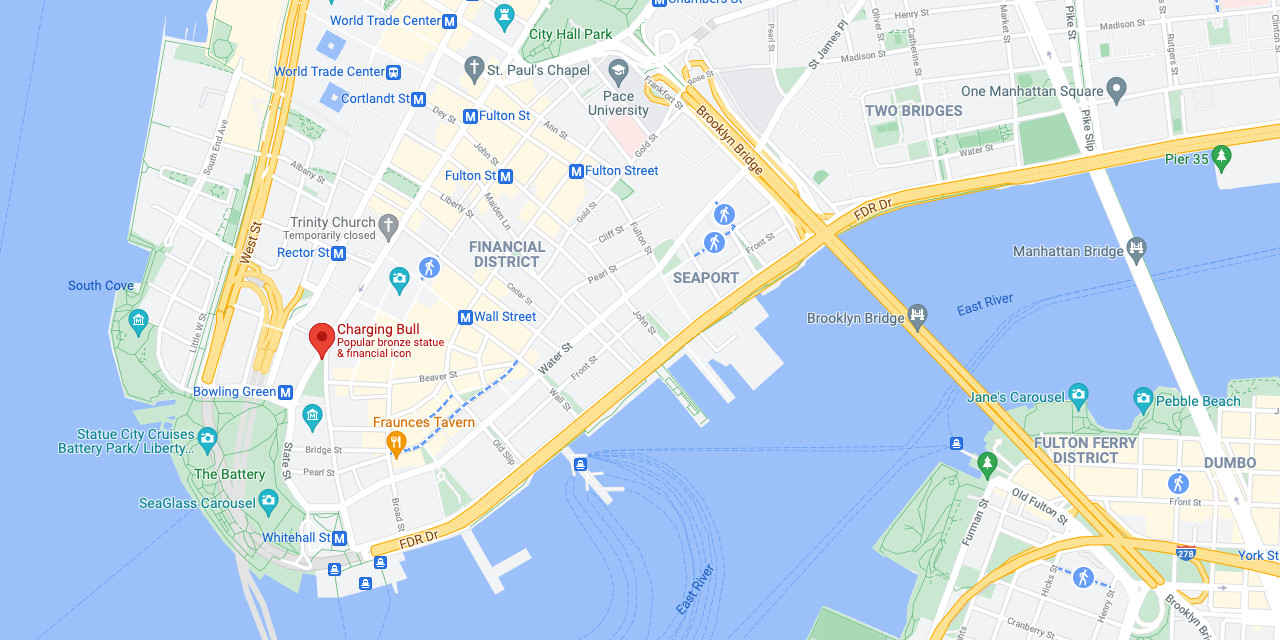
https://www.google.com/maps/place/Charging+Bull
 http://www.chargingbull.com
http://www.chargingbull.com
Broadway and Morris Street
New York, NY 10004
